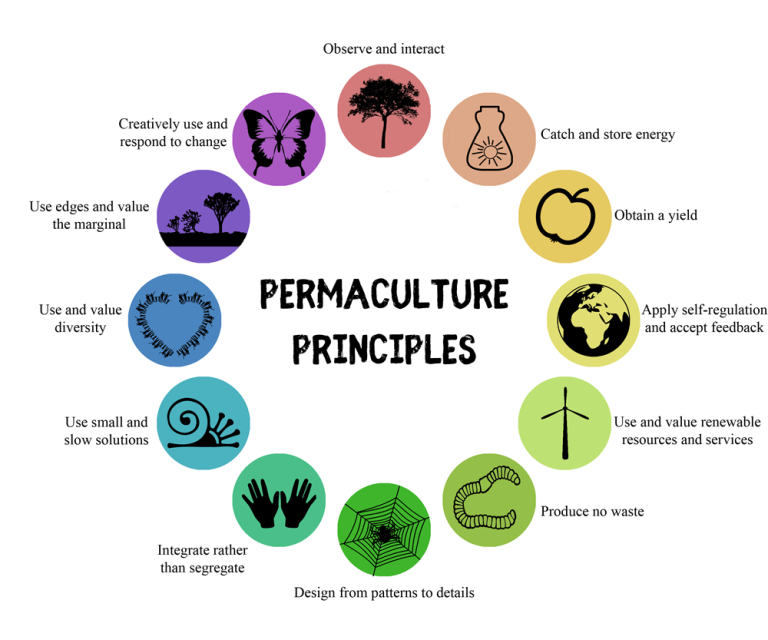Permaculture Principles
The Permaculture Design Principles are thinking tools that can help us to identify and re-design the environment that surrounds us in a sustainable way. They are a guidance in choosing and developing useful application of Permaculture methods, strategies, and techniques. The principles are universal but can be implemented differently and in different situations and places. They can be used in our personal, economic, social, and political reorganisation which will lead us to a more open and ecologically friendly world. Each principle can widen our perspective and change our mind to live healthier and happier.

Design Principles by David Holmgren
“Observe and interact – By taking time to engage with nature we can design solutions that suit our particular situation.
Catch and store energy – By developing systems that collect resources at peak abundance, we can use them in times of need.
Obtain a yield – Ensure that you are getting truly useful rewards as part of the work that you are doing.
Apply self-regulation and accept feedback – We need to stop inappropriate activities to ensure that systems can continue to function well.
Use and value renewable resources and services – Make the best use of nature’s abundance to reduce our consumptive behaviour and dependence on non-renewable resources.
Produce no waste – By valuing and making use of all the resources that are available to us, nothing goes to waste.
Design from patterns to details – By stepping back, we can observe patterns in nature and society. These can form the backbone of our designs, with the details filled in as we.
Integrate rather than segregate – By putting the right things in the right place, relationships develop between those things and they work together to support each other.
Use small and slow solutions – Small and slow systems are easier to maintain than big ones, making better use of local resources and producing more sustainable outcomes.
Use and value diversity – Diversity reduces vulnerability to a variety of threats and takes advantage of the unique nature of the environment in which it resides.
Use edges and value the marginal – The interface between things is where the most interesting events take place. These are often the most valuable, diverse, and productive elements in the system.
Creatively use and respond to change – We can have a positive impact on inevitable change by carefully observing, and then intervening at the right time.“
Sources
Holmgren, David (2002): Permaculture: Principles & Pathways Beyond Sustainability
Permacultureprinciples.com: Permaculture Design Principles
Permaculture – Earth Care, People Care, Future Care: What is Permaculture – Part 2: Principles
Land and Ladle: The 12 Design Principles of Permaculture as Rules of Living
About Us
Kukua Permaculture of Africa is a project to promote Permaculture all over Tanzania and Africa.
Social Media
Copyright 2024 – KPPA
